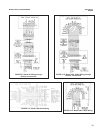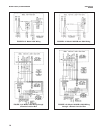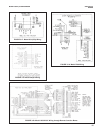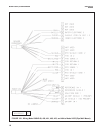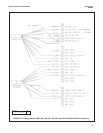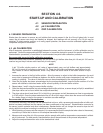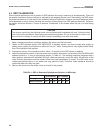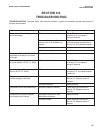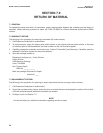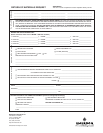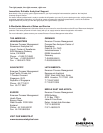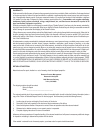
22
MODEL 399VP pH/ORP SENSOR SECTION 5.0
MAINTENANCE
5.3 pH ELECTRODE CLEANING
If the electrode is coated or dirty, clean as follows:
1. Remove the sensor from process.
2. Wipe the glass bulb with a soft, clean, lint free cloth or tissue. If this does not remove the dirt or coating, go
to Step 3 (detergents clean oil and grease; acids remove scale).
3. Wash the glass bulb in a mild detergent solution and rinse it in clean water. If this does not clean the glass
bulb, go to Step 4.
CAUTION
The solution used during the following check is an acid and should be handled with care. Follow the direc-
tions of the acid manufacturer. Wear the proper protective equipment. Do not let the solution come in con-
tact with skin or clothing. If contact with skin is made, immediately rinse with clean water.
4. Wash the glass bulb in a dilute 5% hydro chloric acid solution and rinse with clean water. Soaking the sensor
overnight in the acid solution can improve cleaning action.
NOTE
Erroneous pH results may result immedi ately after acid soak, due to reference junction potential build-up.
Replace the sensor if cleaning does not restore sensor operation.
5.4 ORP PLATINUM ELECTRODE CHECK
The platinum electrode may be checked as follows: there are two types of standard solutions that may be used to
check the ORP electrode/transmitter system.
Type 1: A prepared ORP standard solution (Ferrous/ferric ammonia sulfate standard PN R508-16OZ)
OR
An ORP standard solution can be prepared from the following formula: Dissolve 39.2 grams of reagent
grade ferrous ammonium sulfate, Fe(NH
4
)
2
(SO
4
)
2
• 6H
2
O and 48.2 grams of reagent grade ferric ammo-
nium sulfate, FeNH
4
(SO
4
)
2
• 12H
2
O, in approximately 700 milliliters of water (distilled water is preferred,
but tap water is acceptable). Slowly and carefully add 56.2 milliliters of concentrated sulfuric acid. Add suf-
ficient water to bring the total solution volume up to 1000 ml. This standard ORP solution, although not as
simple to prepare as the quinhydrone formula, is much more stable and will maintain its millivolt value for
approximately one year when stored in glass containers. This solution (ferric/ferrous ammonium sulfate)
will produce a nominal ORP of 476 +20 mV at 25°C when used with a saturated KCl/AgCl reference elec-
trode and platinum measuring electrode. Some tolerance in mV values is to be expected due to the rather
large liquid reference junction potentials that can arise when measuring this strongly acidic and concen-
trated solution. However, if the measuring electrodes are kept clean and in good operating condition, con-
sistently repeatable calibrations can be carried out using this standard solution.
Type 2: Another type of commonly used ORP standard solution is the saturated quinhydrone solution. Refer to
Section 4.3.
CAUTION
The solution used during the following check is an acid and should be handled with care. Follow the
directions of the acid manufacturer. Wear the proper protective equipment. If contact with skin or cloth-
ing is made, immediately rinse with plenty of clean water.
Cleaning a Platinum Electrode. The electrode can be restored to normal operation by simply cleaning the platinum
electrode with baking soda. Polish it by rubbing it with a damp paper towel and baking soda until a bright, shiny appear-
ance is attained.



